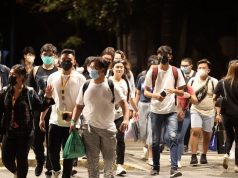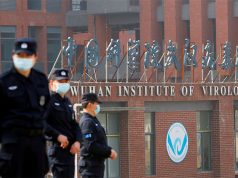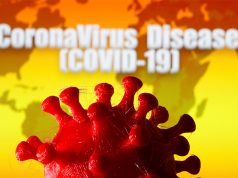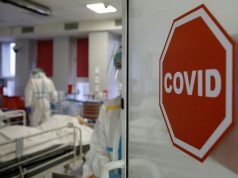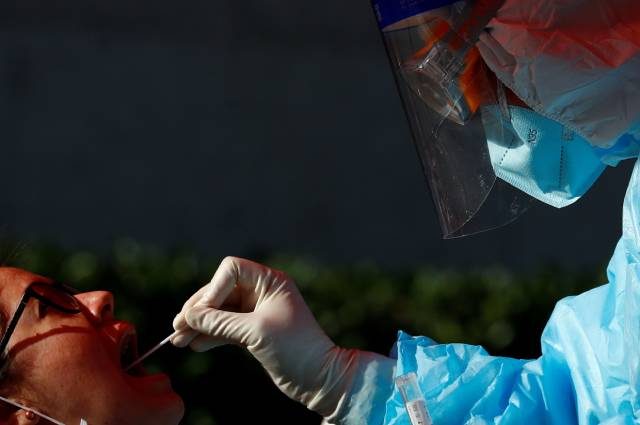
The Department of Health only acknowledged that pre-symptomatic transmission of the coronavirus disease is possible on Thursday but this has already been established by the World Health Organization as early as April.
Health Undersecretary Maria Rosario Vergeire said in an online media forum that there is supposedly new evidence showing that pre-symptomatic transmission can occur.
Pre-symptomatic pertains to the incubation period of the novel coronavirus or the time it takes for a person to develop symptoms after being infected, which can take up to 14 days.
Asymptomatic, meanwhile, pertains to people who have been infected but do not develop any symptom whatsoever.
“Experts have been saying in this recent evidence that presymptomatic transmission really occurs,” Vergeire said.
“May mga ebidensya na transmission occurs from patients who are lab-positive for COVID-19 but have no symptoms yet, or report that they have no symptoms but have very mild symptoms,” she added.
Vergeire said that it might be supposedly difficult to consider people as asymptomatic or pre-symptomatic since “some mild symptoms may not be noticeable for some individuals,” hence it is “not reported” by patients.
She urged people to increase their “index of suspicion” and record even the mildest symptom related to the viral disease they experience.
The health official’s remarks did not sit well with some Filipinos who pointed out that studies and WHO itself have noted pre-symptomatic transmission is possible months ago.
Reuters in its recent explainer report also cited the international health agency and noted that “the WHO agrees that pre-symptomatic carriers are infectious, and adds that there is also a possibility – although little evidence so far – that people who are asymptomatic may also transmit the virus.”

READ: Explainer: Are asymptomatic COVID-19 patients safe or silent carriers?
WHO in its situational report released on April 2 stated that “some persons can be contagious” in a pre-symptomatic period of COVID-19.
“Therefore, transmission from a pre-symptomatic case can occur before symptom onset. In a small number of case reports and studies, pre-symptomatic transmission has been documented through contact tracing efforts and enhanced investigation of clusters of confirmed cases,” it added.
“This is supported by data suggesting that some people can test positive for COVID-19 from 1-3 days before they develop symptoms. Thus, it is possible that people infected with COVID-19 could transmit the virus before significant symptoms develop,” the report continued.
The WHO added that pre-symptomatic transmission can occur through the spread of respiratory droplets or by touching contaminated surfaces.
‘Keep up naman’
Links and a screengrab of the exact report were shared by some Filipinos to point out that the DOH’s supposedly recent findings have already been acknowledged by the international health agency before.
“Keep up naman, DOH,” a Twitter user said with a facepalm emoji.
GMA broadcast journalist Atom Araullo similarly said that the information “isn’t exactly ‘new'” but added that the local health agency is “finally” acknowledging the case.
“This information isn’t exactly ‘new.’ But it’s good that DOH finally acknowledged that people with no symptoms can transmit the virus based on current evidence,” he wrote as he shared a news item featuring the DOH’s report.
“Not really that new but I’m just glad we are all on the same page on this,” physician Jairus Cabajar said in response to the local health agency.
Some Twitter users pointed out that pronouncement is the exact reason why there is an urgent need for mass testing to happen.
“June na, ngayon niyo lang tinanggap itong knowledge na ito? Presymptomatic transmission is why mass testing should be done to prevent further spread,” a Filipino wrote.
“Thus the need for mass testing,” another online user said.
The public has long called for COVID-19 mass testing so that those who are infected will be properly associated and the country will manage to flatten the curve.
This pertains to widespread testing of all of the suspected cases and aggressive contact tracing of individuals in contact with them.
Proponents of the initiative said that the following individuals should be tested to be able to determine the asymptomatic and presymptomatic as well:
- All suspected cases
- All of the close contacts of confirmed or probable cases
- Regular testing of all frontline health care workers
- Surveillance for high-risk communities or vulnerable populations
Other countries like Vietnam have reportedly contained the viral disease through mass testing.




